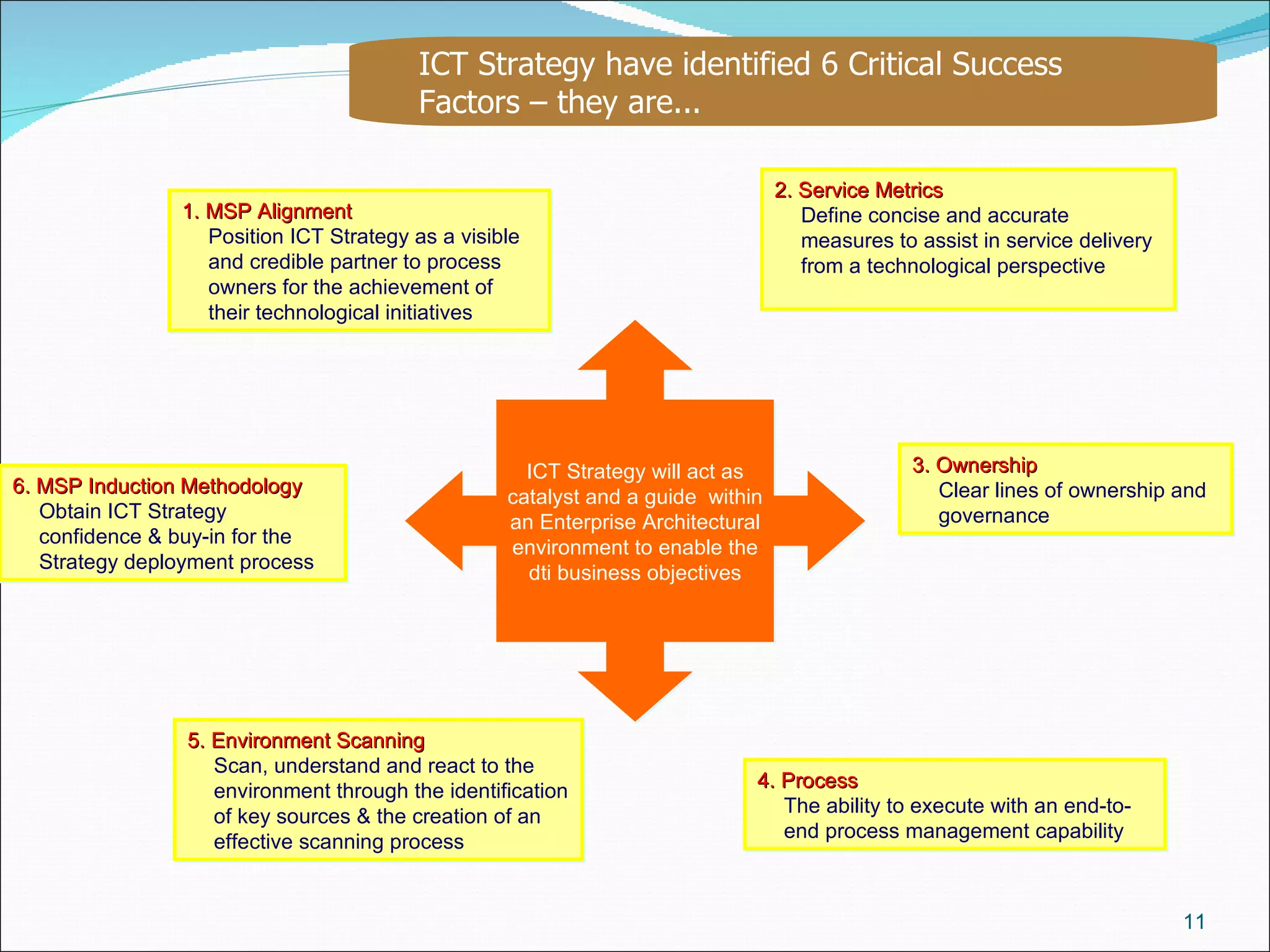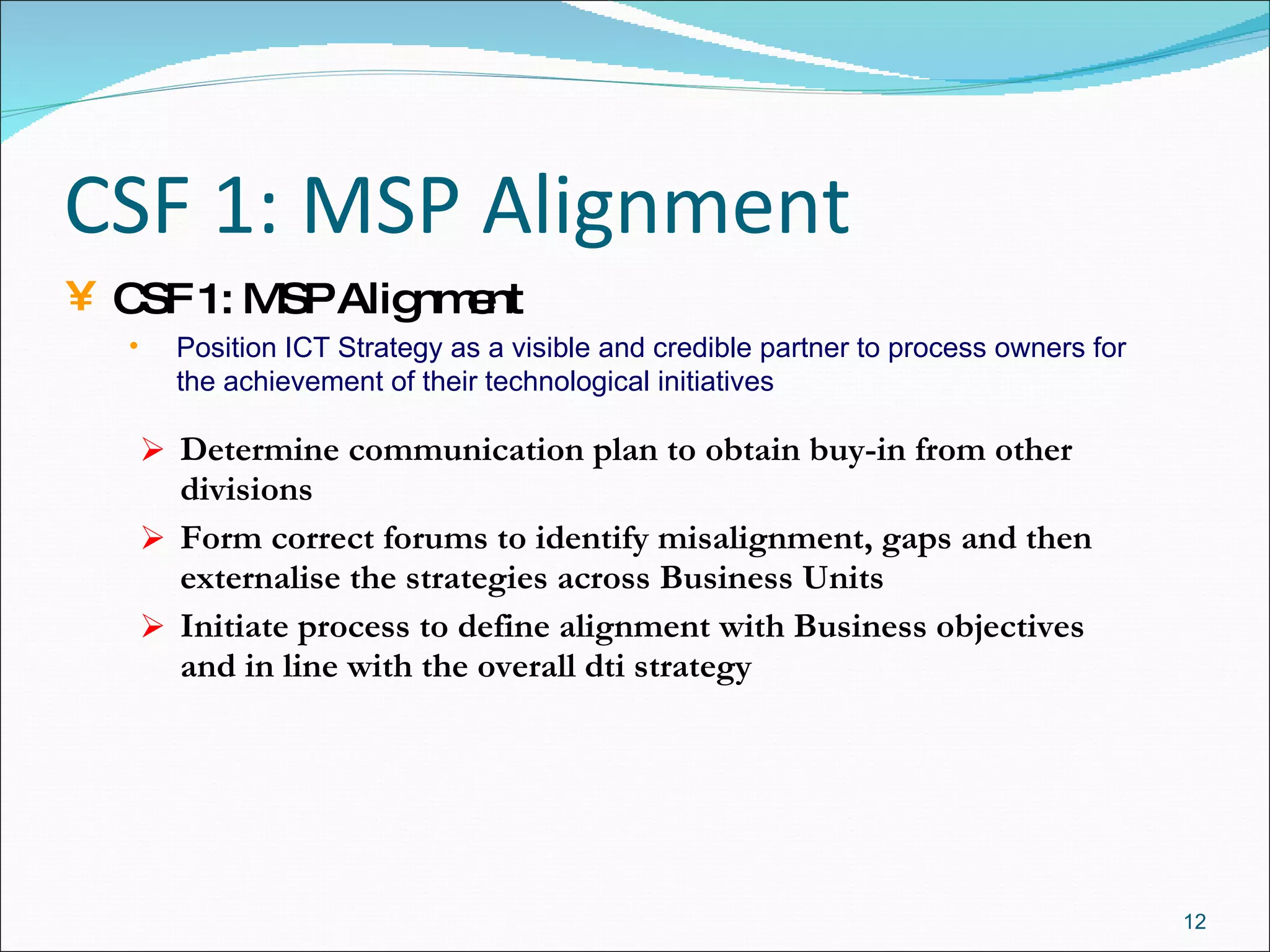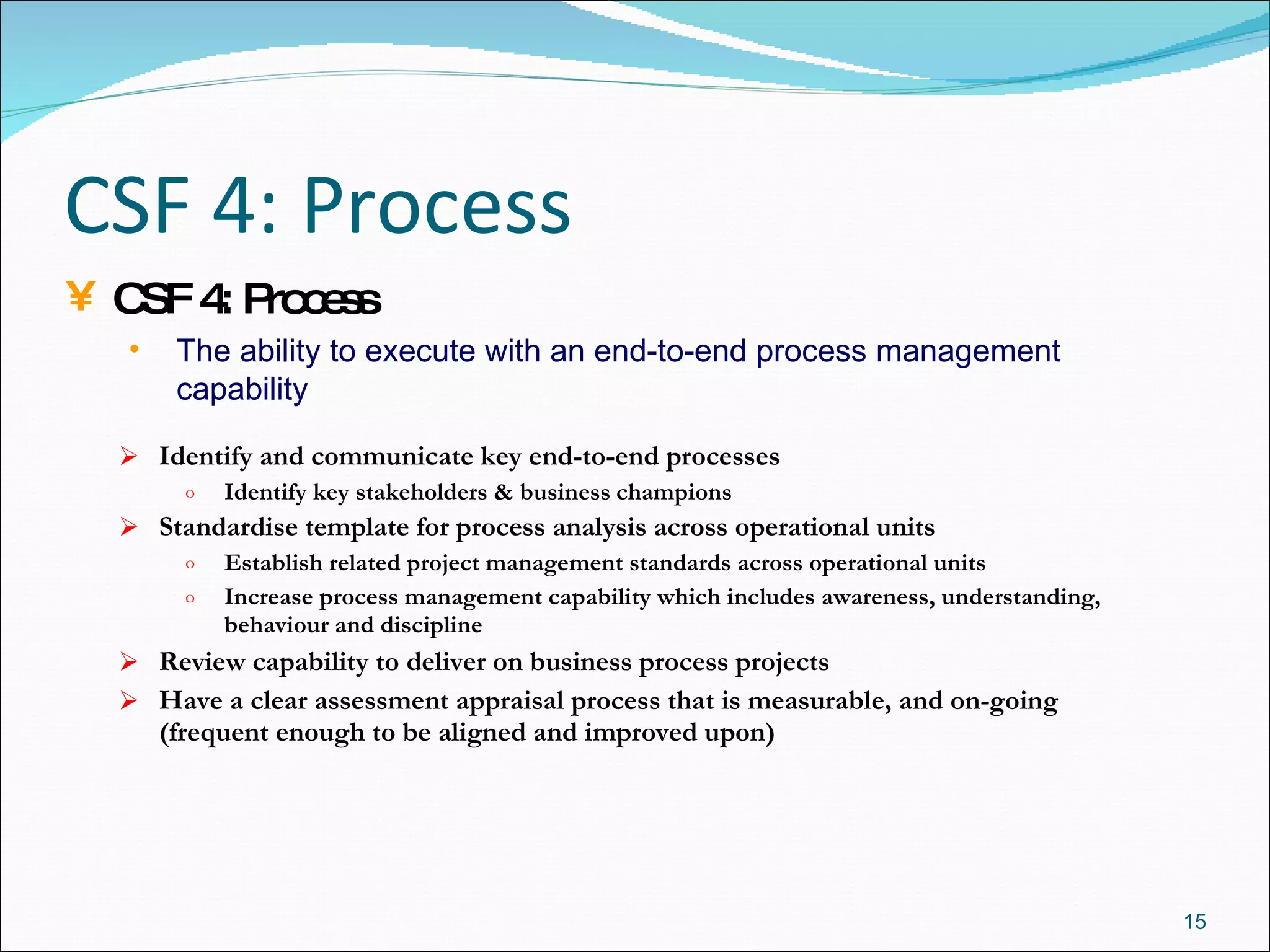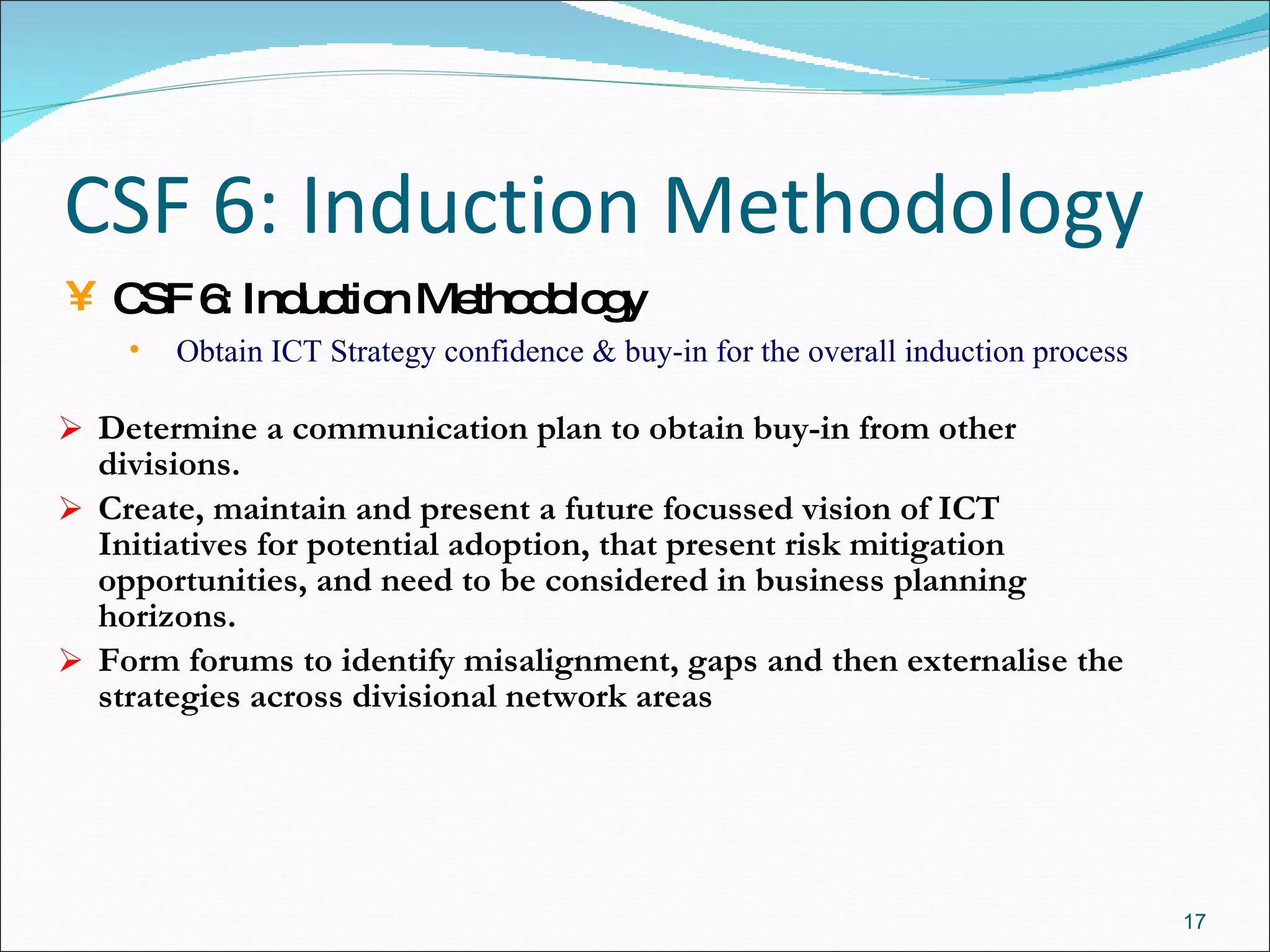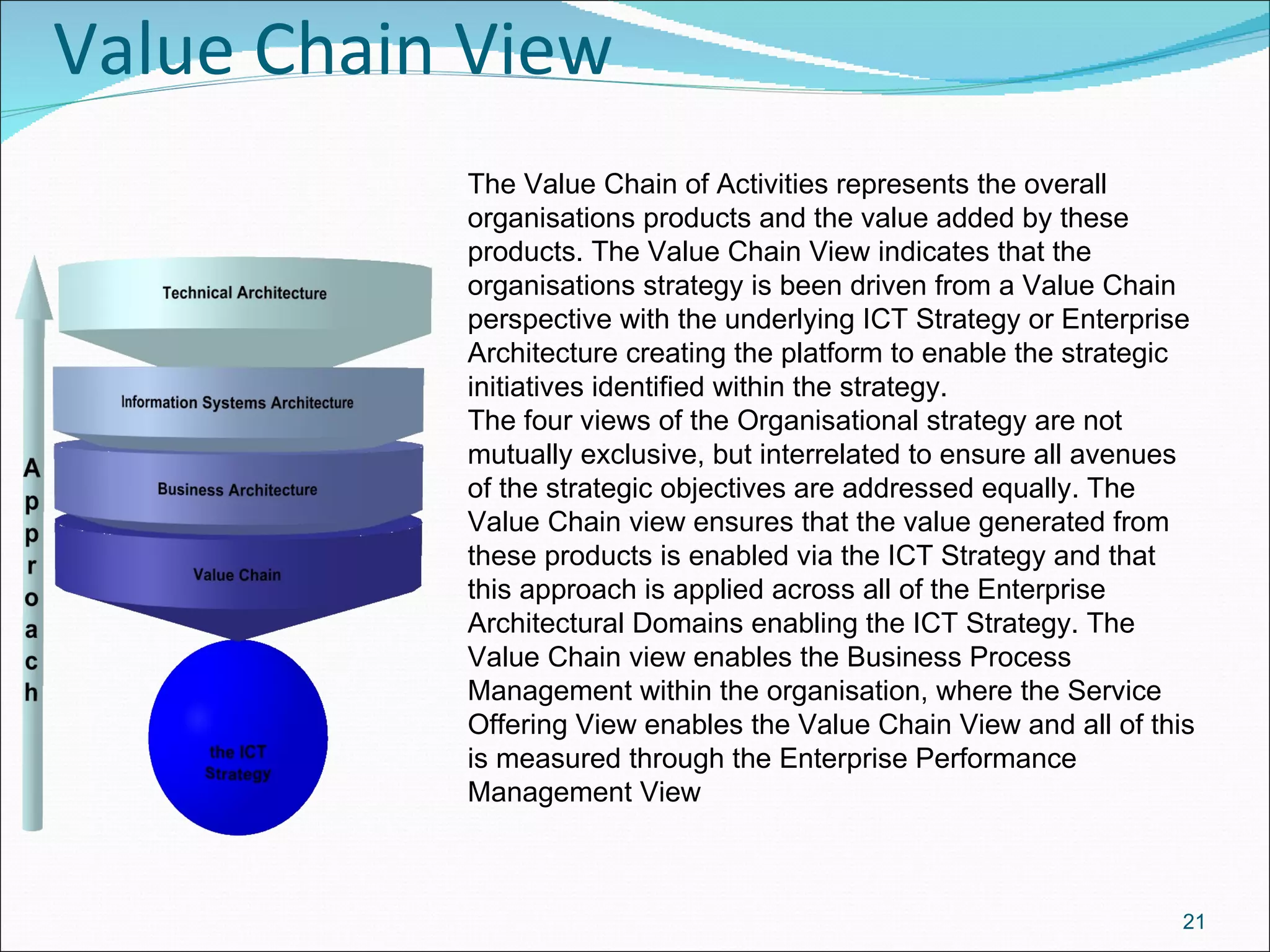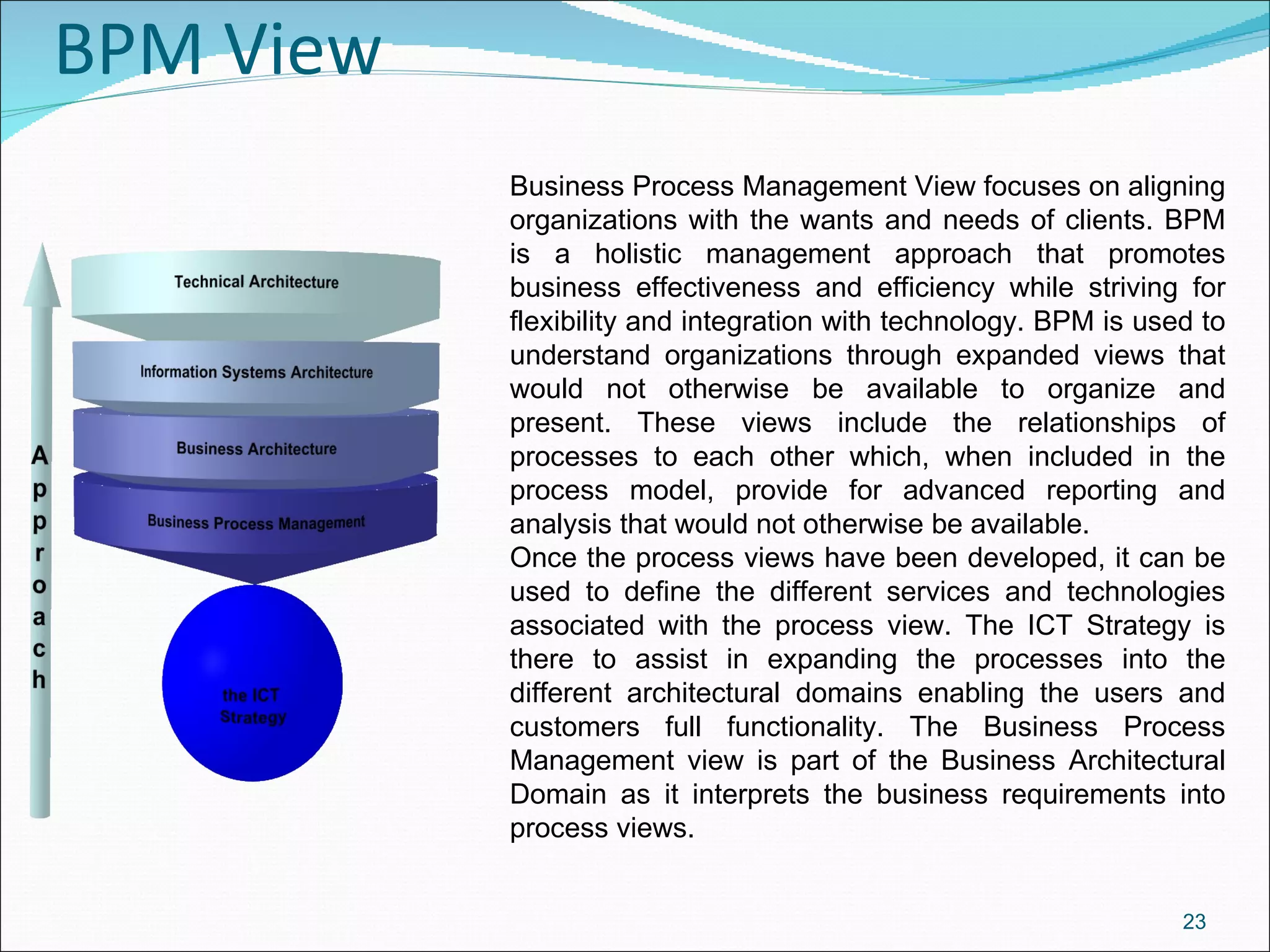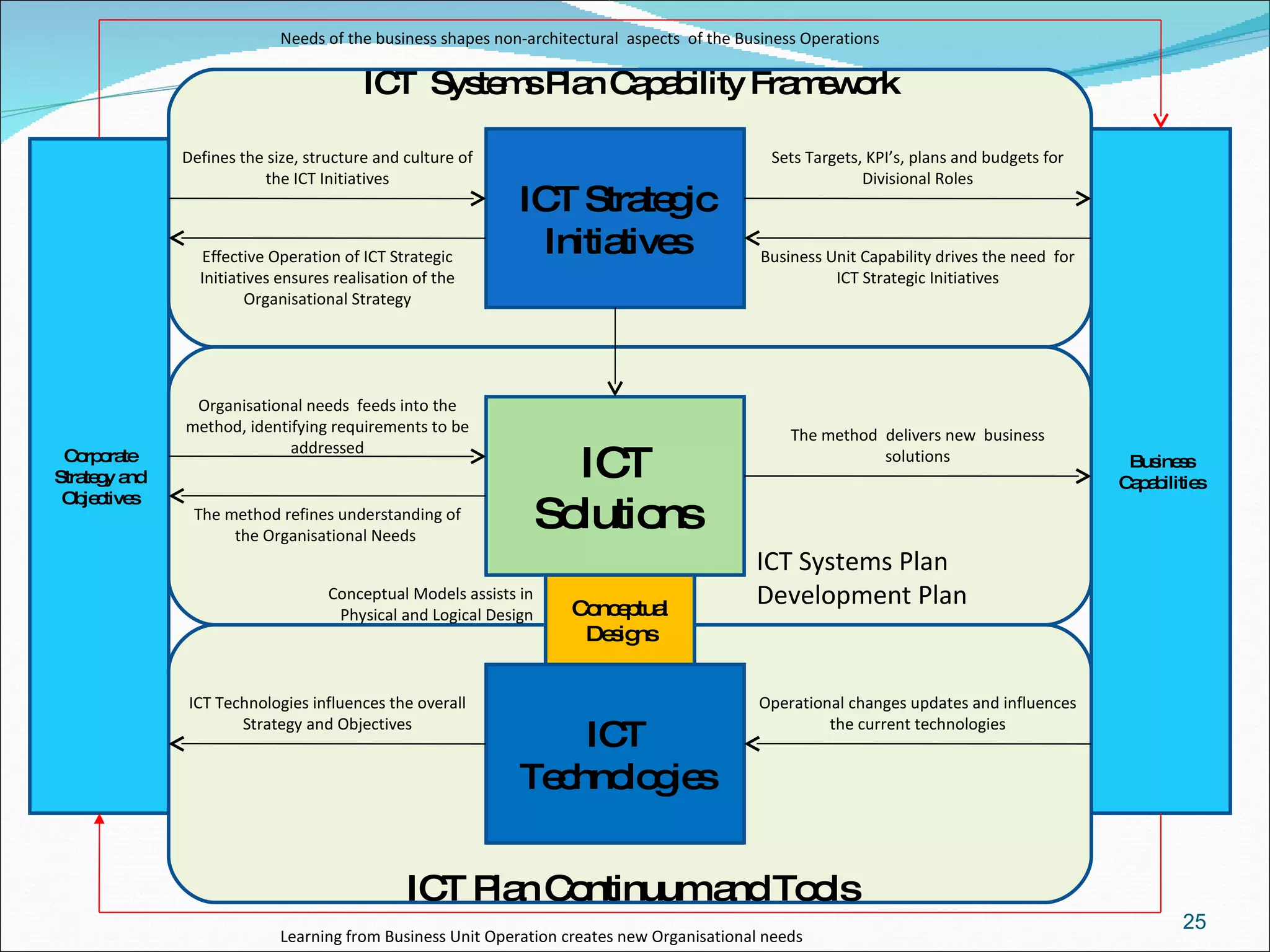The document discusses an enterprise architecture strategy with five key elements:
1. Customer relationship management and data integration
2. People, process, governance and a technical integration framework
3. Analytics, business intelligence, data quality, and master data management
4. Enterprise performance management with operational and analytical requirements
5. Integration across business processes, locations, applications, and data
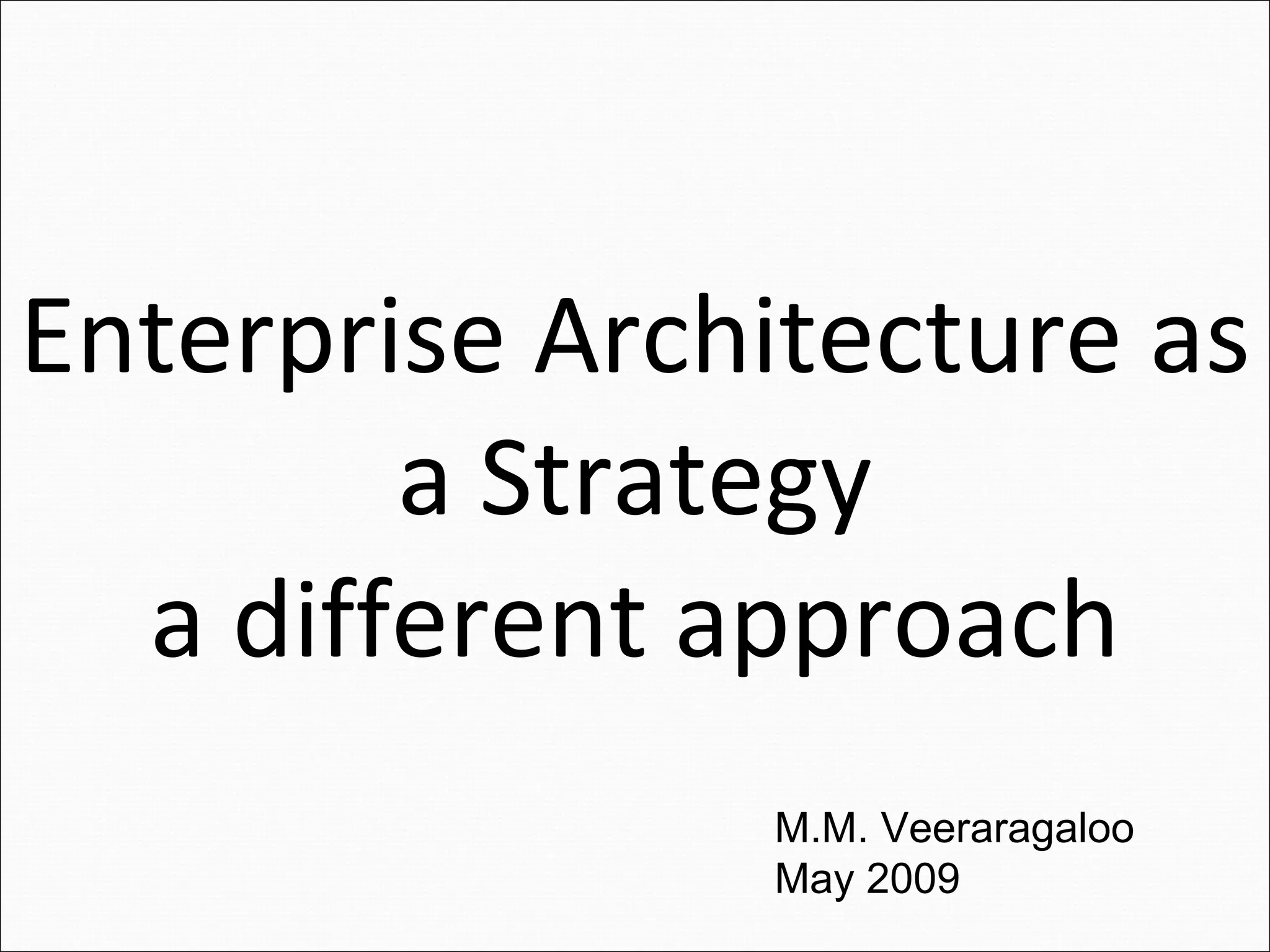
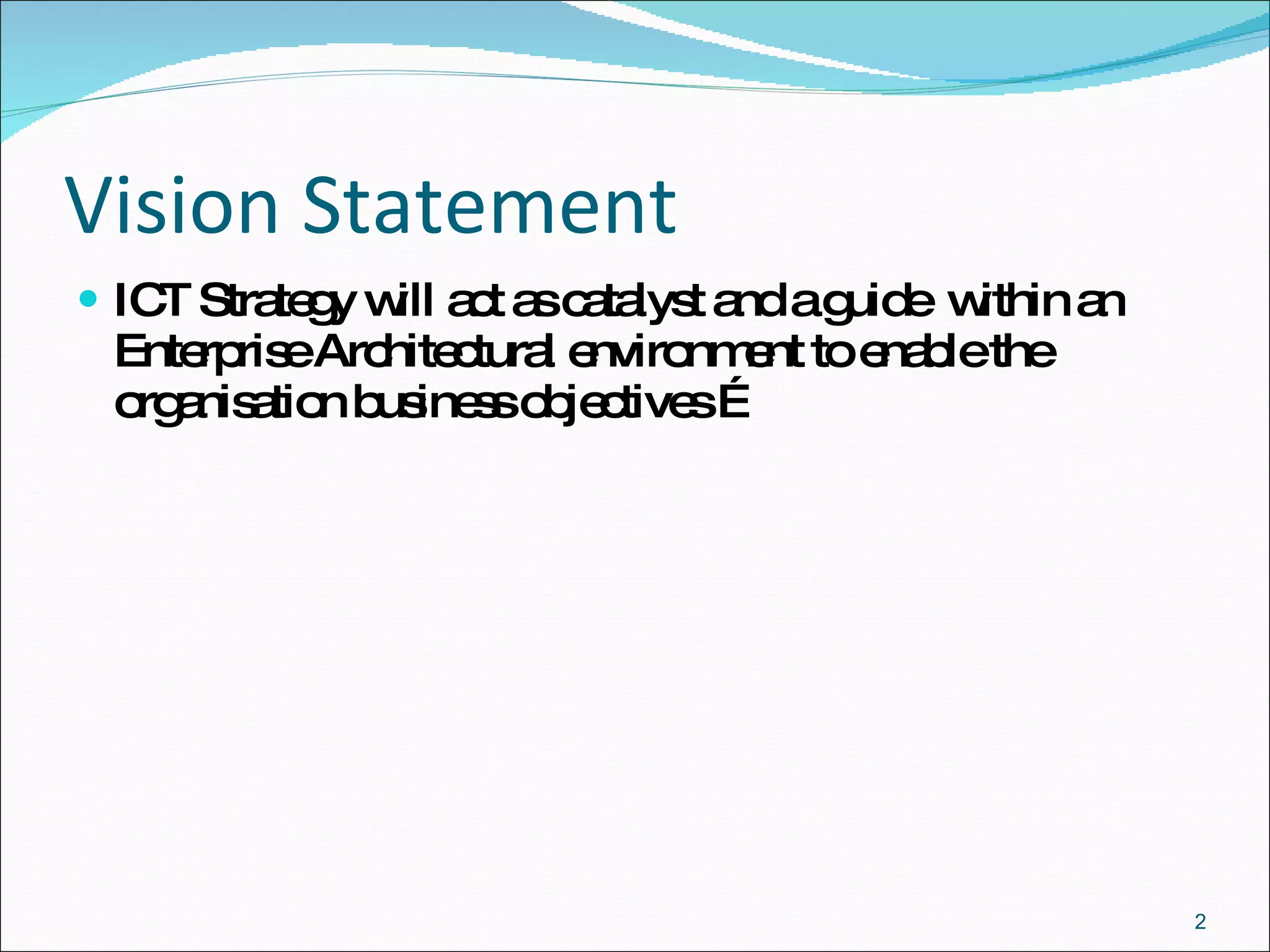
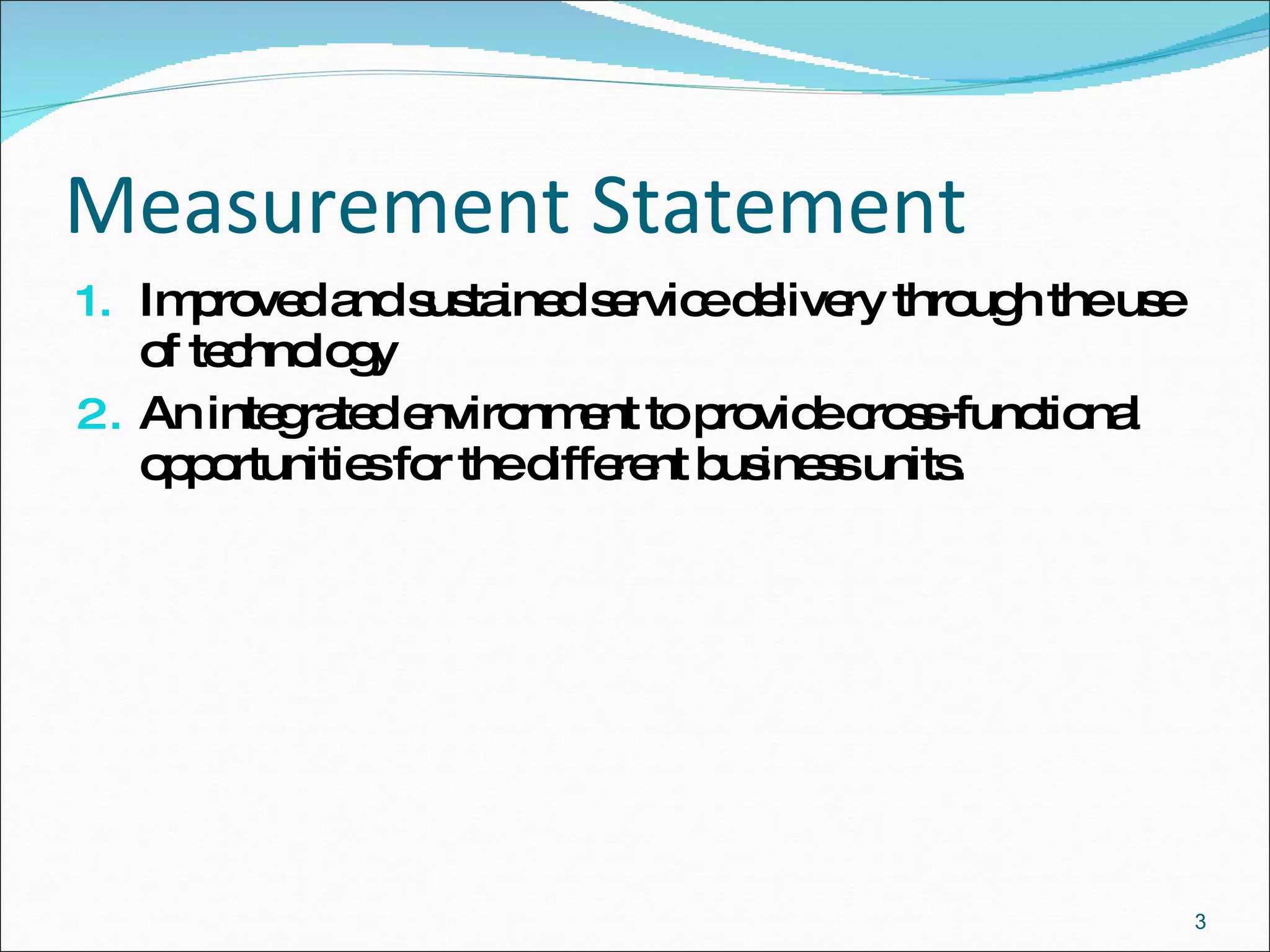




![Strategy Management “ Strategic management is an ongoing process that evaluates and controls the business and the industries in which the company is involved; assesses its competitors and sets goals and strategies to meet all existing and potential competitors; and then reassesses each strategy annually or quarterly [i.e. regularly] to determine how it has been implemented and whether it has succeeded or needs replacement by a new strategy to meet changed circumstances, new technology, new competitors, a new economic environment., or a new social, financial, or political environment.” (Lamb, 1984:ix). The ICT Strategy Vision has driven strategic Technologies that can be grouped into FIVE categories Strategy Management](https://image.slidesharecdn.com/eaasastrategymveeraragalooapproach-124258039448-phpapp02/75/Ea-As-A-Strategy-M-Veeraragaloo-Approach-8-2048.jpg)


